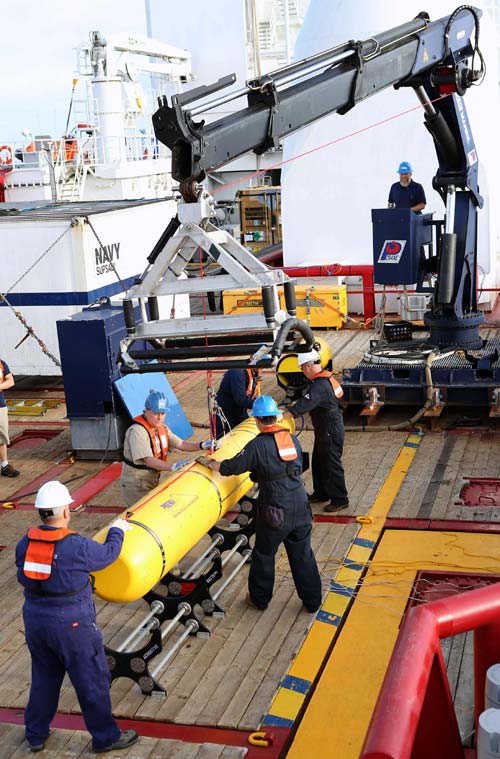 |
|
Crew aboard the Australian Defence Vessel Ocean Shield prepare to deploy the US Navy�s Bluefin-21 autonomous underwater vehicle (AUV) in the southern Indian Ocean to look for the missing Malaysia Airlines flight MH370 in this handout picture released by the Australian Defence Force April 15, 2014. [Photo/Agencies] |
Australian Prime Minister Tony Abbott raised hopes last week when he said authorities were "very confident" the four strong underwater signals that were detected were from the black boxes on Flight 370, which disappeared March 8 during a flight from Kuala Lumpur, Malaysia, to Beijing with 239 people on board, mostly Chinese.
But Houston warned that while the signals are a promising lead, the public needs to be realistic about the challenges facing search crews in the extremely remote, deep patch of ocean _ an area he called "new to man."
"I would caution you against raising hopes that the deployment of the autonomous underwater vehicle will result in the detection of the aircraft wreckage. It may not," Houston said. "However, this is the best lead we have, and it must be pursued vigorously. Again, I emphasize that this will be a slow and painstaking process."
Houston, a retired Australian chief air marshal, called the search "one of the largest search and rescue, search and recovery operations that I've seen in my lifetime."
The Ocean Shield had been dragging a US Navy device called a towed pinger locator through the water to listen for any sounds from the black boxes' beacons.
The Bluefin sub takes six times longer to cover the same area as the ping locator, and the two devices can't be used at the same time. Crews had been hoping to detect additional signals before sending down the sub, so they could triangulate the source and zero in on where the black boxes may be.
The submarine takes 24 hours to complete each mission: two hours to dive to the bottom, 16 hours to search the seafloor, two hours to return to the surface, and four hours to download the data, Houston said.
The black boxes could contain the key to unraveling the mystery of what happened to Flight 370. Investigators believe the plane went down in the southern Indian Ocean based on a flight path calculated from its contacts with a satellite and an analysis of its speed and fuel capacity. But they still don't know why.
But Houston said the visual search operation will end in the next two to three days. Officials haven't found a single piece of debris confirmed to be from the plane, and he said the chances that any would be found have ``greatly diminished.''
"We've got no visual objects," he said. "The only thing we have left at this stage is the four transmissions and an oil slick in the same vicinity, so we will investigate those to their conclusion.
"Up to 11 planes and as many ships were to join Tuesday's search over 62,000 square kilometers (24,000 square miles), 2,200 kilometers (1,400 miles) northwest of Perth.
 |
 |
|
|
|
|
|
|
|
|